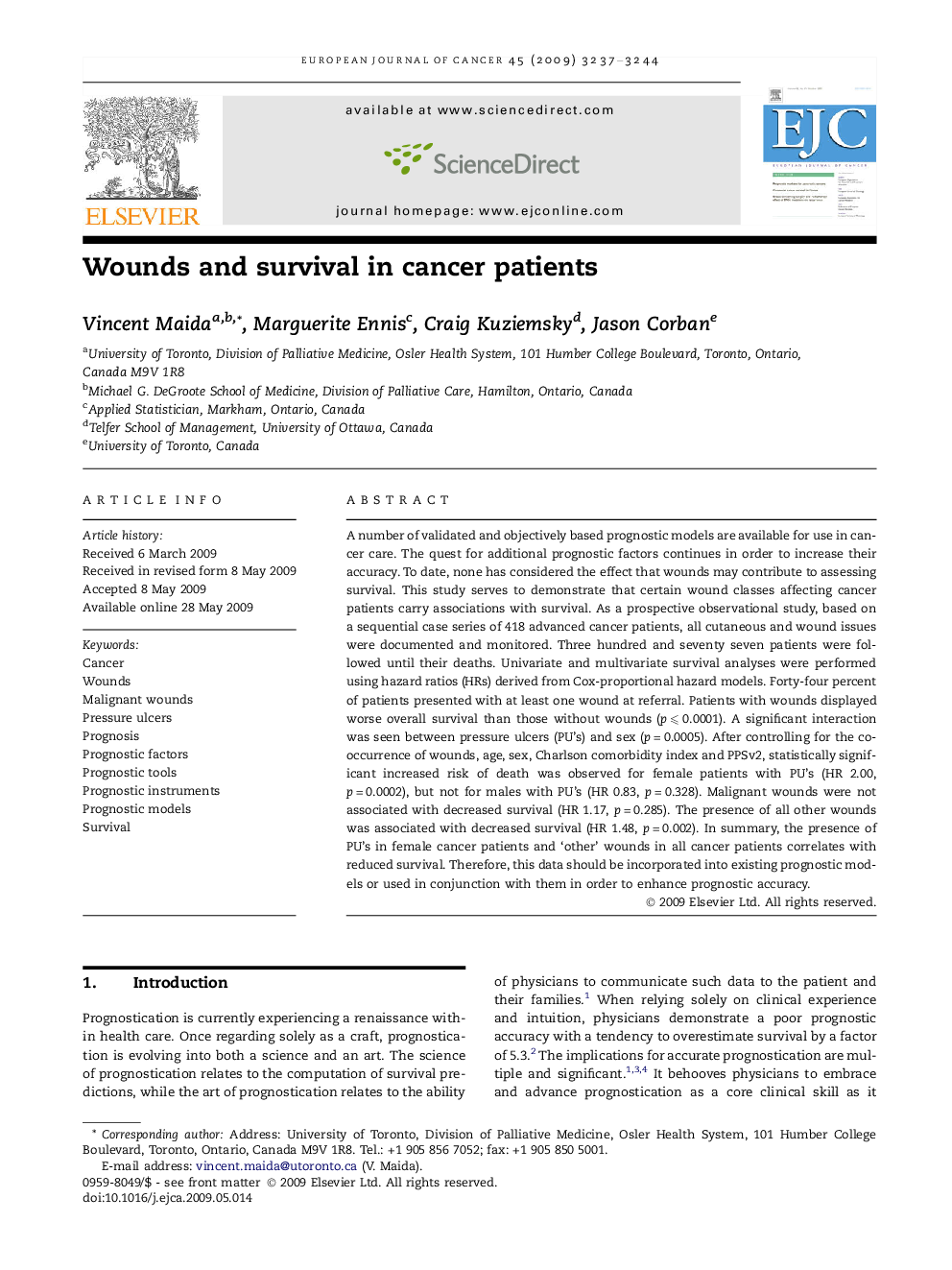| کد مقاله | کد نشریه | سال انتشار | مقاله انگلیسی | نسخه تمام متن |
|---|---|---|---|---|
| 2123437 | 1547220 | 2009 | 8 صفحه PDF | دانلود رایگان |

A number of validated and objectively based prognostic models are available for use in cancer care. The quest for additional prognostic factors continues in order to increase their accuracy. To date, none has considered the effect that wounds may contribute to assessing survival. This study serves to demonstrate that certain wound classes affecting cancer patients carry associations with survival. As a prospective observational study, based on a sequential case series of 418 advanced cancer patients, all cutaneous and wound issues were documented and monitored. Three hundred and seventy seven patients were followed until their deaths. Univariate and multivariate survival analyses were performed using hazard ratios (HRs) derived from Cox-proportional hazard models. Forty-four percent of patients presented with at least one wound at referral. Patients with wounds displayed worse overall survival than those without wounds (p ⩽ 0.0001). A significant interaction was seen between pressure ulcers (PU’s) and sex (p = 0.0005). After controlling for the co-occurrence of wounds, age, sex, Charlson comorbidity index and PPSv2, statistically significant increased risk of death was observed for female patients with PU’s (HR 2.00, p = 0.0002), but not for males with PU’s (HR 0.83, p = 0.328). Malignant wounds were not associated with decreased survival (HR 1.17, p = 0.285). The presence of all other wounds was associated with decreased survival (HR 1.48, p = 0.002). In summary, the presence of PU’s in female cancer patients and ‘other’ wounds in all cancer patients correlates with reduced survival. Therefore, this data should be incorporated into existing prognostic models or used in conjunction with them in order to enhance prognostic accuracy.
Journal: European Journal of Cancer - Volume 45, Issue 18, December 2009, Pages 3237–3244